Recent Posts
Why SERVPRO of E. Vancouver / Clark County is Your Trusted Partner
4/16/2025 (Permalink)
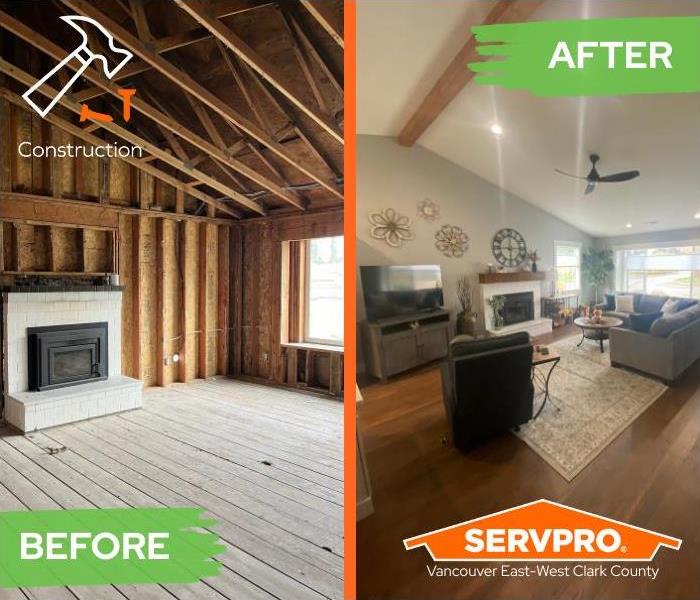 SERVPRO of E. Vancouver / Clark County provides comprehensive cleaning, restoration, and construction services that you can trust.
SERVPRO of E. Vancouver / Clark County provides comprehensive cleaning, restoration, and construction services that you can trust.
When disaster strikes your home or business in East Vancouver or Clark County, you need more than just a cleaning crew. You need a team that can handle the entire recovery process, from initial cleanup to complete restoration. That's where SERVPRO of E. Vancouver / Clark County steps in. We offer comprehensive cleaning, restoration, and construction services, providing a seamless and stress-free experience during a challenging time.
We understand that every situation is unique, whether it's water damage from a burst pipe, mold infestation, or the devastating aftermath of a fire. Our highly trained and certified professionals are equipped with the expertise and state-of-the-art equipment to tackle any challenge. We don't just clean the surface; we address the root of the problem, ensuring thorough and lasting results.
Consider this residential home in image above, SERVPRO of E. Vancouver / Clark County was called in for the holistic fire damage cleanup, restoration and construction process and was able to restore their home back to preloss conditions.
At SERVPRO of E. Vancouver / Clark County, we pride ourselves on our one-stop-shop approach. We handle everything from the initial emergency response and cleaning to the final reconstruction, saving you time, money, and the headache of managing multiple contractors. Our commitment to excellence, combined with our local knowledge and dedication to our community, makes us the clear choice for all your cleaning, restoration, and construction needs. When the unexpected happens, trust the team that goes above and beyond. Trust SERVPRO of E. Vancouver / Clark County.
Don't Wait for Disaster: The Value of a Commercial Emergency Ready Plan (ERP)
4/1/2025 (Permalink)
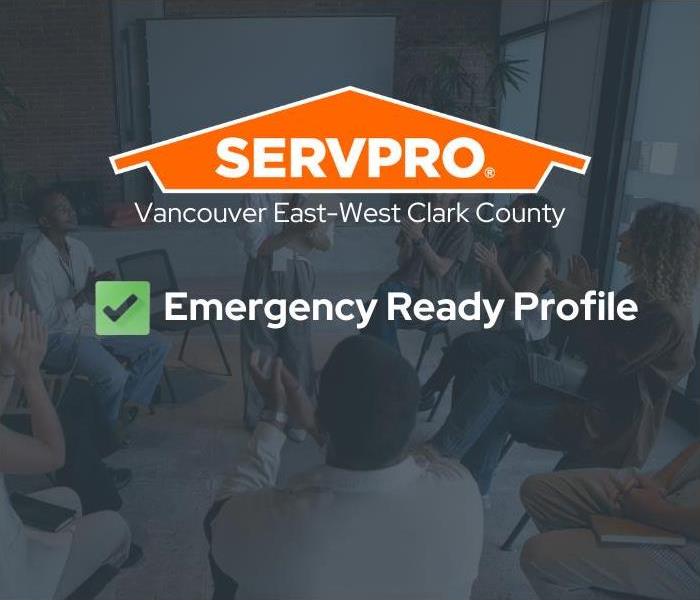 Call SERVPRO of East Vancouver Clark County today for any of your commercial cleanup and restoration needs (360) 254-4418
Call SERVPRO of East Vancouver Clark County today for any of your commercial cleanup and restoration needs (360) 254-4418
At SERVPRO of Vancouver East-West Clark County, we understand that in the unpredictable world of business, being prepared for the unexpected is paramount. A Commercial Emergency Ready Plan (ERP) isn't just a document; it's a lifeline that can minimize downtime, protect assets, and safeguard your team when disaster strikes right here in our community.
Imagine a sudden flood, a devastating fire in your commercial building, or a severe windstorm impacting your business. Without a clear, localized plan, chaos ensues. An ERP, tailored to the unique risks of Vancouver and Clark County, provides a structured approach, outlining critical steps to take before, during, and after an emergency. It's about proactive preparation, not reactive scrambling.
An effective ERP, and one that we at SERVPRO of Vancouver East-West Clark County can help you develop, details evacuation routes specific to our area, contact information for key personnel and local emergency services, procedures for data backup and recovery, and protocols for communicating with employees and clients. It also addresses the crucial aspect of restoration, detailing preferred vendors like SERVPRO of Vancouver East-West Clark County, who are ready to swiftly mitigate damage and get your business back on track.
The value of an ERP extends beyond immediate response. It minimizes financial losses by reducing downtime and preventing further damage. It protects your reputation by demonstrating responsible management. And, most importantly, it ensures the safety and well-being of your employees and our community. Investing time in developing a comprehensive, locally-focused ERP with SERVPRO of Vancouver East-West Clark County is an investment in your business's resilience. Don't wait for disaster to strike – plan today for a safer, more secure tomorrow, with SERVPRO of Vancouver East-West Clark County.
What To Do When A Pipe Burst At Home
3/14/2025 (Permalink)
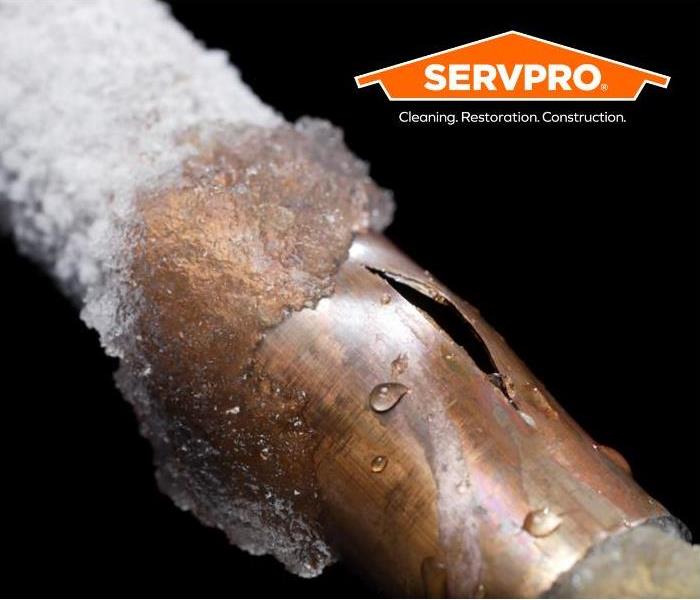 For all your Vancouver water restoration needs call SERVPRO of Vancouver East-West Clark County (360) 254-0049
For all your Vancouver water restoration needs call SERVPRO of Vancouver East-West Clark County (360) 254-0049
A burst pipe can cause significant water damage in your Vancouver home, leaving you stressed and overwhelmed. However, knowing what steps to take can minimize the impact and help you restore your property. Here’s what you need to do when faced with a burst pipe.
Shut off the Water Supply
The first step is to stop the flow of water by turning off the main water valve. This will prevent any further flooding or damage to your property.
Turn off the Electricity
If water has come into contact with electrical outlets or wiring, it’s essential to turn off the electricity on your circuit breaker to avoid the risk of electricity.
Assess the Damage
Take a quick around the affected areas. If it is safe, remove any valuable items or furniture to prevent them from being damaged.
Call SERVPRO of Vancouver East-West Clark County
Water damage can be a complex process. Contact our team as soon as possible as we have the expertise and equipment to efficiently manage the cleanup, drying and restoration process.
Document the Damage
Take photos of the affected areas for insurance purposes. This documentation will be helpful when filing a claim.
When a pipe bursts, acting quickly is crucial to minimizing water damage and preventing long-term issues like mold growth. For effective water damage cleanup and restoration, trust SERVPRO of Vancouver to restore your home quickly and thoroughly “Like it never even happened.”
Spring Showers, Spring Floods: Protecting Your Property with Expert Water Damage Restoration.
3/10/2025 (Permalink)
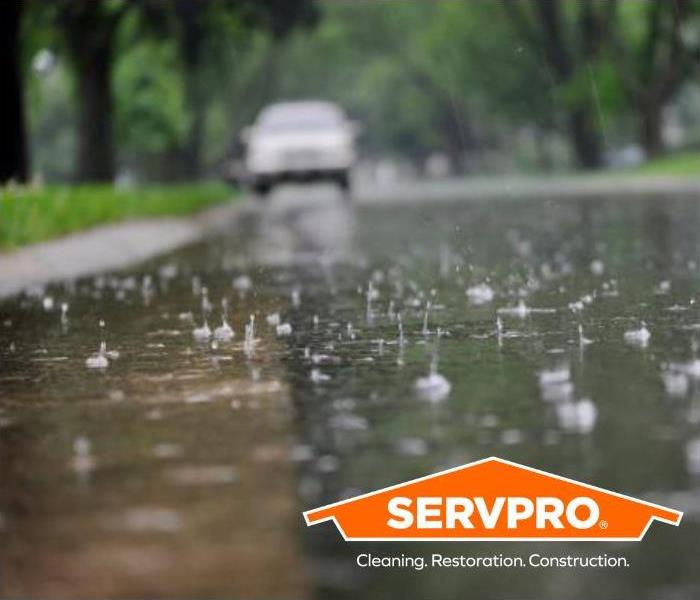 Call SERVPRO OF VANCOUVER EAST-WEST CLARK COUNTY This Spring for All Your Water Damage Restoration Needs (360) 254-0049
Call SERVPRO OF VANCOUVER EAST-WEST CLARK COUNTY This Spring for All Your Water Damage Restoration Needs (360) 254-0049
Spring's arrival brings warmer weather and blooming flowers, but it also signals the start of increased rainfall and potential flooding. After a long winter, melting snow and spring showers can quickly overwhelm drainage systems, leading to unexpected water damage. As the thaw begins, it's crucial to be prepared and understand the importance of prompt water removal, mitigation, and restoration.
Spring's Hidden Dangers:
- Increased Rainfall: Spring showers can be intense, leading to roof leaks and overflowing gutters.
- Melting Snow: Snowmelt can saturate the ground, causing foundation leaks and basement flooding.
- Frozen Pipe Thaws: Pipes that froze during winter can crack and burst as they thaw, causing significant water damage.
- Overflowing Rivers and Streams: Spring runoff can cause rivers and streams to overflow, leading to widespread flooding.
Why Spring Demands Swift Action:
With warmer temperatures, mold growth accelerates. Prompt water removal and mitigation are critical to preventing this. Don't let spring's beauty be overshadowed by water damage.
Our Spring Water Damage Solutions:
- Rapid Response: We understand the urgency of spring water damage and offer 24/7 emergency services.
- Comprehensive Water Removal: Powerful pumps and extraction equipment to eliminate standing water quickly.
- Effective Water Mitigation: We'll address the source of the problem and prevent further damage.
- Thorough Restoration: From drying and sanitization to repairs and reconstruction, we'll restore your property to its pre-damaged condition.
Don't let spring's unpredictable weather catch you off guard. Contact SERVPRO Vancouver East-West Clark County today for expert water damage restoration services and protect your property from the risks of spring flooding.
Strengthening Our Community: SERVPRO of E. /W. Vancouver Celebrates Haven Treatment Center’s Ribbon Cutting
2/25/2025 (Permalink)
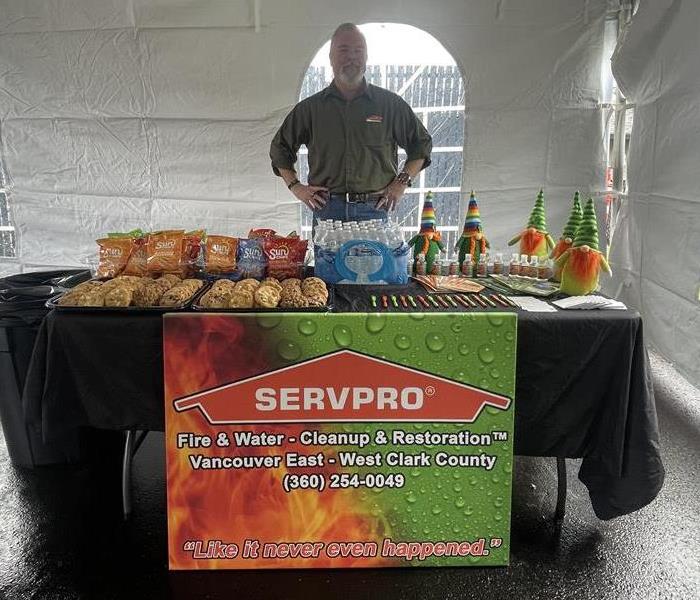 SERVPRO of E. /W. Vancouver Was Proud to Participate in Today's Ribbon Crossing for Haven Treatment Center
SERVPRO of E. /W. Vancouver Was Proud to Participate in Today's Ribbon Crossing for Haven Treatment Center
At SERVPRO of E. /W. Vancouver, we believe in more than just restoring homes and businesses. We believe in building a stronger and more resilient community. That’s why we were honored to participate in today’s ribbon-cutting ceremony for the Haven Treatment Center, a sanctuary for displaced foster care youth and at-risk individuals in our very own Clark County. The Haven Treatment Center is a testament to compassion and community support. Their goal is to provide support that helps young individuals transition successfully into adulthood.
Our presence at the Haven Treatment Center’s ribbon cutting wasn’t just about promoting our services. It was about demonstrating our unwavering commitment to the greater Vancouver area. At our booth, we had the opportunity to connect with attendees, sharing information about how SERVPRO of E. /W. Vancouver can help in times of crisis. Whether it's water damage, fire damage, mold remediation or storm damage, we’re here to provide fast, reliable and professional restoration services.
Why Community Ties Matter to SERVPRO
We’re not just a national brand; we’re your neighbors. We live and work in the same community as you do. We understand the unique challenges faced by residents of Vancouver. That’s why we are dedicated to:
- Supporting Local Initiatives: We actively seek opportunities to partner with organizations like Haven Treatment Center that have a positive impact on our community.
- Building Strong Relationships: We believe in fostering long-term relationships with our customers and community members.
- Providing Quick and Reliable Services: When disaster strikes, you need a team you can trust. We’re committed to providing prompt and efficient restoration services to get your life back to normal as soon as possible.
- Being a Resource: We want to be a resource for our community, offering valuable information and support during challenging times.
When you choose SERVPRO of E. /W. Vancouver, you’re not just choosing a restoration company; you’re choosing a partner who cares about your well-being and the well-being of our community.
If you are facing a disaster, don’t hesitate to contact SERVPRO of E. /W. Vancouver. We’re available 24/7 to help you restore your property “Like It Never Even Happened.”
What to Do When You Discover Water Damage in Your Home
2/21/2025 (Permalink)
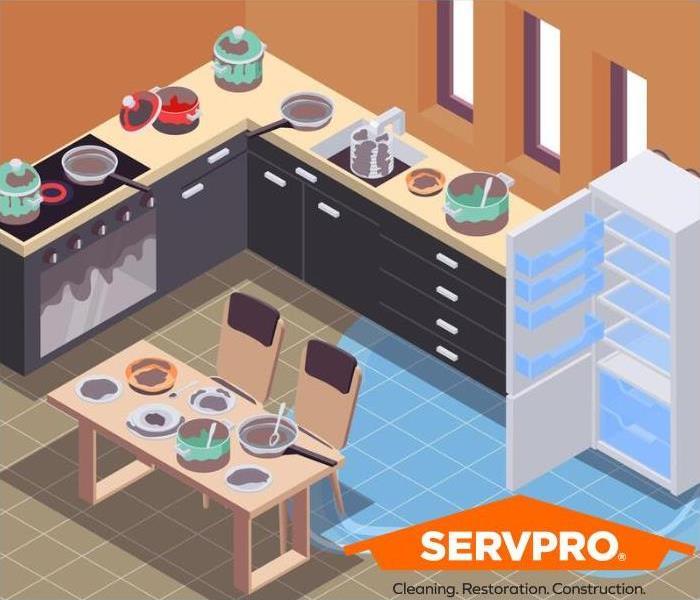 For All Your Water Damage Restoration Needs, Call SERVPRO of E. /W. Vancouver at (360) 254-0049
For All Your Water Damage Restoration Needs, Call SERVPRO of E. /W. Vancouver at (360) 254-0049
Discovering water damage in your home can be stressful. Whether it comes from a burst pipe, a leaky roof or flooding, it is important to act quickly in order to minimize damage and prevent further problems such as mold growth. If you ever experience water damage, here are some immediate steps to take.
Safety First
- If there is an electrical danger nearby, turn off the power at the main breaker.
- Avoid walking through deep water where electrical hazards may be present.
Stop the Source
- If possible, identify the sources of the water damage. This may include turning the water valve off or patching a leak.
Remove Excess Water
- Use towels, mops or a wet vacuum to remove as much excess water as possible.
Documenting the Damages
- Take pictures and videos of the affected areas for insurance purposes.
Call the Professionals
- Contact SERVPRO of E. /W. Vancouver immediately. Prompt action from our professionals can prevent long-term damage.
Water damage can escalate rapidly, so don’t delay. Our team at SERVPRO of E. /W. Vancouver is available 24/7 and is here to provide fast and reliable water restoration services in Vancouver and Clark County.
Is That Black Mold? Understanding the Risks and Importance of Remediation
2/21/2025 (Permalink)
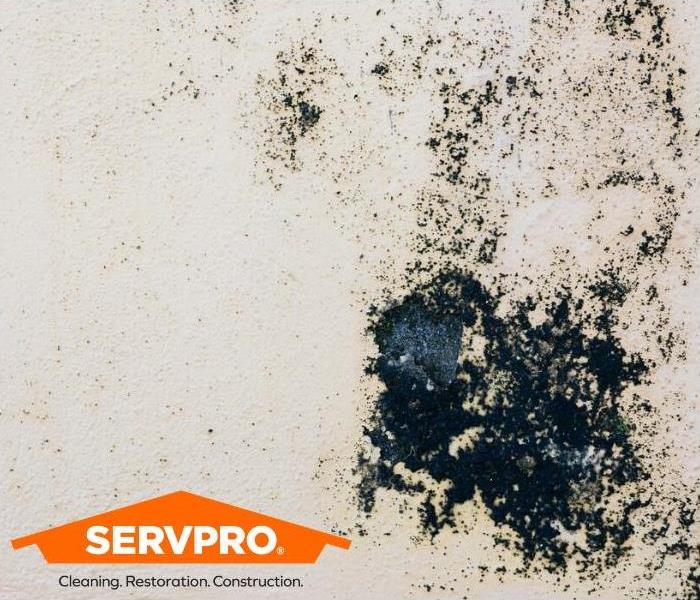 Black Mold Appears as Dark, Slimy patches with a Fuzzy Texture, Often Exhibiting a Greenish-Black Color
Black Mold Appears as Dark, Slimy patches with a Fuzzy Texture, Often Exhibiting a Greenish-Black Color
Discovering mold in your house can be alarming, especially if it appears black. Many homeowners in Vancouver worry about black mold, and rightfully so. Although not all dark-colored mold is toxic, all mold can create health risks and damage your property. Here’s what you need to know
Identifying Potential Mold Issues
- Visible Growth: Dark spots, discoloration and a musty smell are often indicators of mold development.
- Water Damage: Past or present leaks, floods, or high humidity create an ideal environment for mold to grow.
- Health Symptoms: Unexplained allergies, respiratory issues, or headaches could be linked to mold exposure.
Why SERVPRO’s Professional Mold Remediation Matters
- Accurate Identification: Our technicians can identify if mold is present inside your home.
- Safe Removal: SERVPRO of E. /W. Vancouver has the specialized equipment and techniques to eliminate any mold present and prevent further spread.
- Protecting Your Health: Mold spores can trigger allergies and respiratory problems. SERVPRO’s remediation minimizes exposure to mold.
If you suspect mold in your Vancouver home, don’t wait. Contact SERVPRO of E. /W. Vancouver for a thorough mold inspection and professional remediation services. We understand the importance of a healthy home, and are committed to providing expert mold remediation services that effectively eliminate mold, returning your home to its pre-damaged state “Like it Never Even Happened.”
6 Tips to Prepare Your Home for a Winter Storm
2/19/2025 (Permalink)
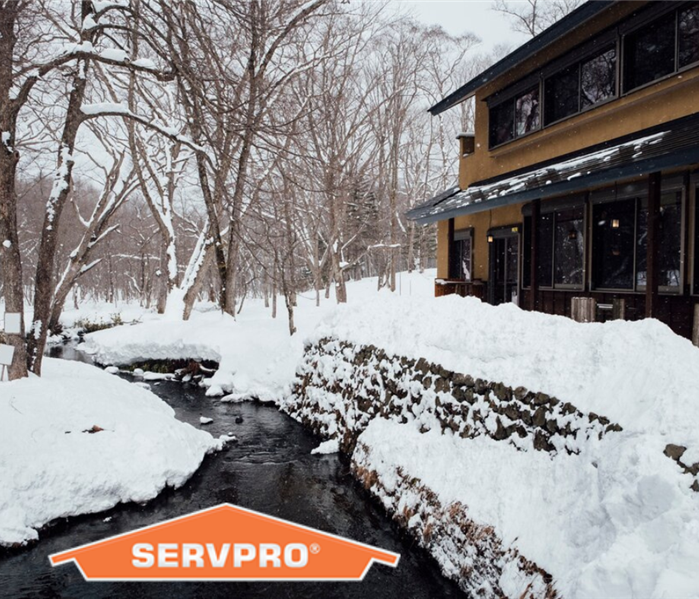 For All Your Winter Storm Restoration needs, Call SERVPRO of E. /W. Vancouver at (360) 254-0049
For All Your Winter Storm Restoration needs, Call SERVPRO of E. /W. Vancouver at (360) 254-0049
Winter storms can wreak havoc on homes this time of year, but proactive homeowners can take measures that can minimize the damage. Here are six tips to keep your home safe this winter season.
1.) Protect Your Pipes
Frozen pipes are a massive headache and can lead to significant water damage in your home. Insulate exposed pipes in unheated places such as your garage and crawlspace. It’s also recommended that you let your faucets drip and leave the cabinet doors under your sink open to allow warm air to circulate.
2.) Clear Your Gutters
Cold gutters can lead to the development of ice dams, which can cause roof leaks and structural damage to your home. By cleaning your gutters and downspouts before a winter storm, you help ensure that your home has proper drainage.
3.) Trim Your Trees
Branches overhanging your home weighted down by snow may eventually snap and damage your roof or power lines. Trim any branches from trees or bushes near your home to prevent damage.
4.) Seal the Gaps
Cold air from the outside can enter through cracks around your windows and doors, which can drive up your heading cost and lead to frozen pipe. Seal up all gaps with weather stripping or caulk.
5.) Check Your Roof
Look for any loose shingles or signs of damage on your roof. Your roof is your first line of defense against the elements outside. Also, consider getting a roof rake to remove any excess snow sitting on top of your roof.
6.) Power Up
In case of any power outages caused by a storm, have flashlights, batteries and a generator ready. Make sure to test your generator beforehand to make sure it works and know how to use it safely.
By taking these precautions, you can help your home stay strong throughout the winter storm.
However, even with the best of preparation, winter storms can sometimes cause unexpected damage. If your home suffers from water damage and any other storm-related damage, don’t hesitate to call SERVPRO of E. /W. Vancouver. We’re here to help with all your cleanup and restoration needs to get your home back to its pre-storm conditions, quickly and efficiently, like if it never happened.
Fire Damage Protocol
8/7/2024 (Permalink)
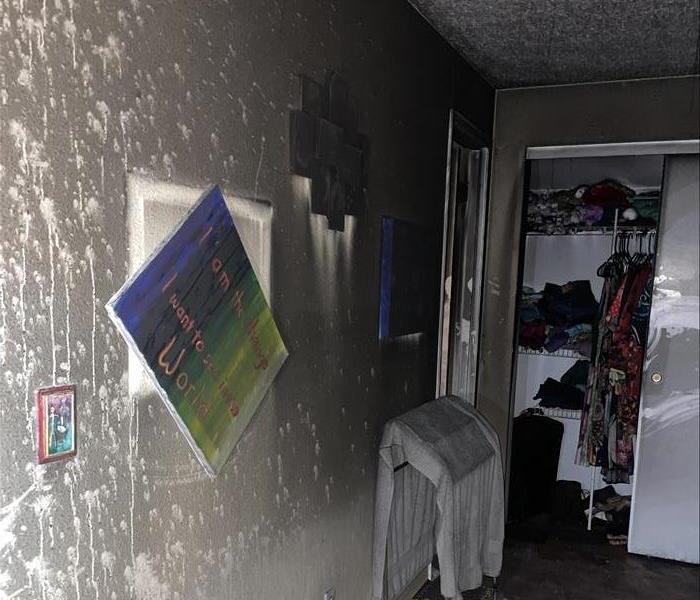 A bedroom showing visible fire damage with soot coating the walls
A bedroom showing visible fire damage with soot coating the walls
If you’re dealing with fire damage, it’s important to address both the immediate and long-term impacts to ensure safety and facilitate recovery. Here’s a guide to help you navigate the process:
Immediately After a Fire
- Ensure Safety
- Do Not Enter: Only re-enter your property when authorities declare it safe.
- Check for Hazards: Look for structural damage, gas leaks, and electrical issues before re-entering.
- Contact Authorities and Insurance
- Fire Department: Obtain a copy of the fire report.
- Insurance Company: Report the damage and start the claims process. Provide detailed information and documentation.
- Call SERVPRO Vancouver E./W.
- Dial (360)254-0049 to reach the office for assistance and information
- Document Damage
- Photographs and Videos: Capture all damage to help with insurance claims and recovery.
- Inventory: List damaged or destroyed items for insurance purposes.
- Secure the Property
- Board Up: If windows and doors are damaged, board them up to prevent further entry and vandalism.
- Cover Roof and Walls: Use tarps or other protective coverings to prevent weather damage.
Cleanup and Restoration
- Remove Debris
- Safety First: Wear protective gear (gloves, masks, etc.) to avoid injury from debris and exposure to hazardous materials.
- Salvage Items: Separate salvageable items from debris. Be cautious with items that may be contaminated or hazardous.
- Address Smoke and Soot Damage
- Ventilation: Open windows and use fans to ventilate and reduce smoke odor.
- Clean Surfaces: Use specialized cleaners for soot and smoke residue. Avoid using regular cleaning products that can push soot deeper into surfaces.
- Inspect for Water Damage
- Check for Leaks: Firefighting efforts can lead to water damage. Inspect for leaks, mold, and mildew.
- Dry Out: Use dehumidifiers and fans to dry out affected areas.
Handling fire damage requires a careful approach to ensure safety, address immediate concerns, and plan for recovery. SERVPRO Vancouver E./W. is here to help you manage these steps!
Commercial Spring Cleaning!
5/1/2024 (Permalink)
Spring cleaning time is here, and that does not just include your home. As we head back to work, we know people will be spending more time at work than they do at home. Commercial properties deserve a thorough cleaning as well. This season brings allergies, coughing, sneezing and the buildup of dust is inevitable. From floor to ceiling we will clean your carpets, wipe down your fans, and disinfect during the process. We Are Here To Help!
With the recent COVID-19 outbreak we understand that many employees are not comfortable going back to their place of employment as well as clients and customers coming in to shop. We are currently disinfecting and cleaning commercial properties to help you feel safe. We follow all of the CDC guidelines and we focus on wiping down touch points such as:
- Phones
- Keypad
- Handsets
- Buttons on Equipment
- Desk-tops
- Knobs and Handles
- Light Switches
- Computer mouse and keypad
We also go around spraying with our top of the line electrostatic sprayer to make sure we hit points such as:
- Windows
- Tops of cubicles
- File cabinets, desktops
- Behind furniture
- Around equipment
- Under desk
 SERVPRO of E. Vancouver / Clark County provides comprehensive cleaning, restoration, and construction services that you can trust.
SERVPRO of E. Vancouver / Clark County provides comprehensive cleaning, restoration, and construction services that you can trust.






 24/7 Emergency Service
24/7 Emergency Service





